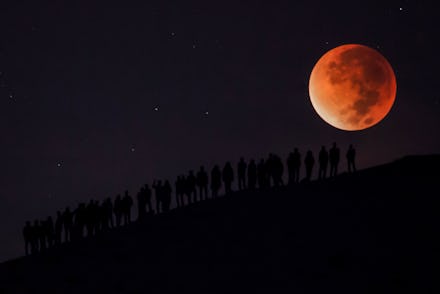Supermoon Oct. 26: How and Where to Watch Hunter Moon and Final Supermoon of 2015

The year's final supermoon, when the moon is closest to Earth, is Monday night. The event, which recently won over the Internet with last month's rare "blood moon" and lunar eclipse, happens to coincide with a full moon, meaning it's expected to be particularly bright.
Monday night's supermoon is expected to appear about 14% larger and 30% brighter than normal, according to EarthSky.org. "If you're in the Northern Hemisphere, look for the moon to be bright and full-looking for several nights beginning around Oct. 26 and 27," EarthSky.org reports. "Around all of these nights, you'll see a bright, round moon in your sky, rising around the time of sunset, highest in the middle of the night."
People wanting to catch the supermoon in action can visit here to see when the moon is expected to rise in their area.
The term supermoon refers to when the moon is within 90% of its closest position to Earth, known scientifically as its perigee, Tuscon News Now reports. There are between four and six supermoons a year, however having a supermoon fall on the same day as a full moon is rare.
Monday's full moon happens to be a special kind of full moon, dubbed the "Hunter Moon" because it appears in October and is the first full moon after the so-called Harvest Moon. The Harvest Moon occurs nearest to the autumnal equinox, which falls on or around Sept. 22 every year.